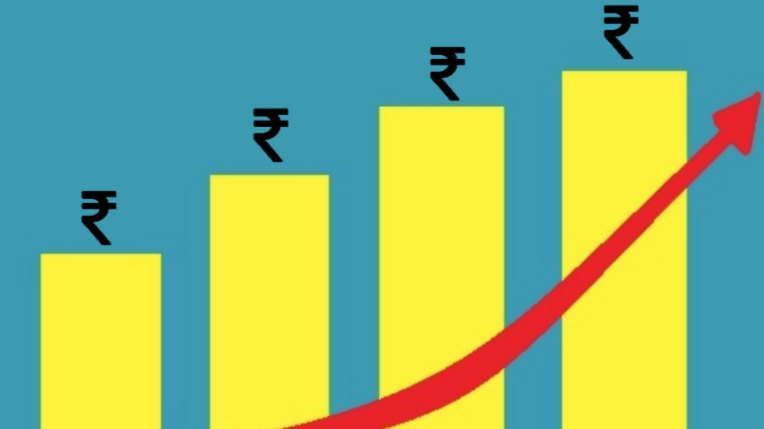The possible reason the RBI’s Monetary Policy Committee has kept the door open for future rate hikes is that while inflation has eased, it is still higher than the RBI’s target. Meanwhile, post the latest hike, the portfolio yields of debt mutual funds will move up marginally.
The six wise men and women comprising the Monetary Policy Committee (MPC) of the Reserve Bank of India (RBI), met to deliberate and decide the course of interest rates in the country. The RBI Governor beamed up on television on February 8 morning, to announce the outcome. Most people in the market were expecting an interest rate hike of 25 basis points, i.e., 0.25 per cent. And this is exactly what happened.
The interest rate increase we are talking about is on the repo rate, the rate at which the Reserve Bank of India funds banks, if required, one day at a time. It went up from 6.25 percent to 6.5 percent. This rate is the pivot for interest rates in the entire economy. A hike in the repo rate today, will lead to an increase in banks’ lending and deposit rates tomorrow.
People’s antennae were up, looking to gauge whether there was any hint the RBI was softening its stance, and to get a sense of which way it would go at its next meeting on 6 April, 2023. And on that, the RBI kept its options open.
The rationale
The reason the market was expecting signs of a pause in interest rate hikes is that inflation has eased. Consumer Price Inflation, which was 7.79 percent in April 2022, came down to 5.72 percent in December 2022. Real interest rates are positive now. The RBI repo rate, so far at 6.25 percent and 6.5 percent from now on, was higher than CPI inflation in December 2022, which was 5.72 percent. The one-year deposit rate at State Bank of India is 6.75 percent.
The possible reason the RBI MPC kept the door open for any future rate hike is that while inflation has eased, it is still higher than the RBI’s target. The basic target of CPI inflation is 4 percent. There was a hue and cry earlier when inflation was consistently above 6 percent, which is the outer end of the RBI’s tolerance band.
Moreover, the RBI refers to a gauge called core inflation, which is inflation apart from food and fuel items. Core inflation is still on the higher side, and was more than 6 percent in December 2022.
Projections in the latest review
The RBI’s projections on CPI inflation are 5.7 percent in the current quarter, i.e., January to March 2023. This is expected to ease to 5 percent next quarter, i.e., April to June 2023. It is expected to inch up thereafter, to average 5.3 percent over the whole of financial year 2023-24.
Either way, it would be lower than in the current financial year, which averaged 6.8% from April to December 2022. GDP growth in the next financial year, 2023-24, is expected to be 6.4 percent.
The likely path forward
The RBI has maintained its stance of “withdrawal of accommodation” on policy rate formulation. The implication is that it will have a bias towards rate hikes. However, notwithstanding the official stance, the probability of a rate hike going forward is on the lower side. Inflation has eased and is expected to ease further. Real interest rates are positive.
The rationale for the RBI to maintain the stance of withdrawal of accommodation could be that of a “provision”, if required, if inflation gives a negative surprise. With talks of a global recession, which will have some impact on growth in India as well, interest rates should be reasonable to contain inflation but not too high, in order to support growth.
Of the six members of the MPC, four members have voted in favour of the rate hike and maintaining the stance of withdrawal. In the next meeting on 6 April 2023, if one of the members changes his/her mind and voting is equally divided, the Governor has the casting vote.
Impact on you
My previous articles emphasised that this is a good time to invest in debt funds. Portfolio yields of debt funds are much better than, say, two years ago. Post today’s rate hike, the portfolio yields of debt mutual funds will move up marginally. The upward move will be marginal and not substantial, because the market had already factored in today’s rate hike of 25 bps. Since interest rates and bond prices move inversely, there will be a temporary impact on the performance of debt funds, to a little extent.
The interest rate on floating-rate loans from banks will move up immediately, as they are benchmarked to an external benchmark, referred to as EBLR. The RBI repo rate has moved up by 2.5 percent since 4 May 2022; 3-month and 6-month Treasury Bill yields have also moved up significantly. EBLR loan rates will move up accordingly. Other loans, referred to as MCLR (marginal cost-based lending rate) move up with a lag. On the other side of the table, the move stands to benefit depositors.
Source: https://www.moneycontrol.com/news/business/personal-finance/rbi-raises-repo-rate-as-expected-but-does-not-hint-at-end-to-hikes-10032381.html


